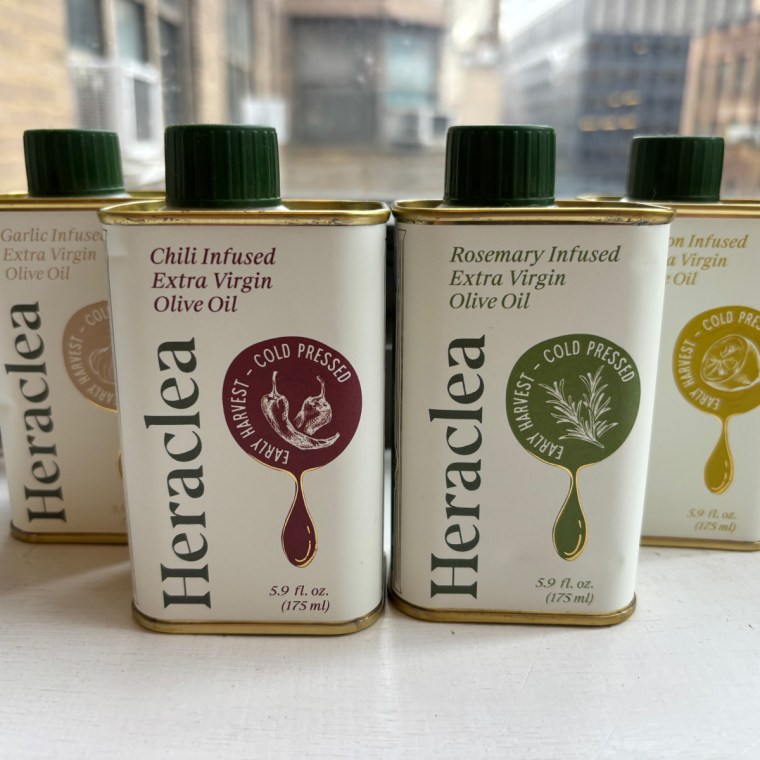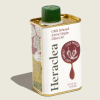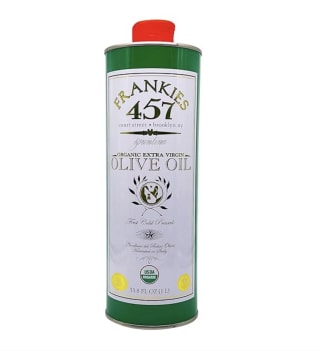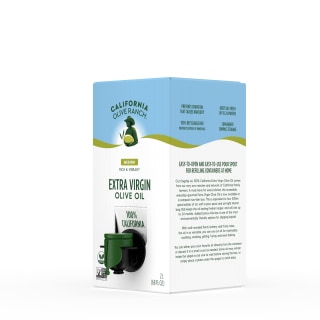Shopping for olive oil is like shopping for wine: Any bottle can get the job done, and no grape — or olive in this case — is technically “better” than another, says Dino Borri, global vice president of Eataly, which has restaurants and Italian marketplaces across the world. Olive oil ranges in taste, color, aroma and texture based on the region it comes from, so paying attention to how and where it’s produced can help you find one that best fits your flavor preferences.
I spoke to experts about what to consider while shopping for an olive oil that’s right for you and how to make sure you’re preserving its quality to the very last drop.
SKIP AHEAD The best extra-virgin olive oils to shop
How I picked the best extra-virgin olive oils
While shopping for olive oil, experts recommend considering the following factors:
- Extra-virgin: Experts recommend buying extra-virgin olive oil (EVOO) since it’s the highest quality option on the market. Unlike standard or virgin olive oil, EVOO is extracted through a cold press and spun through a centrifuge, and no chemicals or heat are used during the process, says Brooke Gil, an olive oil merchant for Whole Foods Market. (Ed’s note: The inclusion of products sold by Whole Foods in this article was made independently of Gil.) For an olive oil to be considered extra-virgin, it must meet standards set by the International Olive Council, which regularly certifies laboratories that test olive oils against IOC standards (more on what this involves below).
- Harvest date: “The fresher the olive oil, the better the quality since olive oil oxidizes with time, light, heat and air,” says Gil. Olive oil bottles list a harvest date, which you want to be as close to your point of purchase as possible. A more recent harvest date means the olive oil is fresher, according to Elizabeth Barbone, a recipe developer and cookbook author with over two decades of culinary experience, who runs the site Cook Fast, Eat Well.
- Region and olive variety: If you look at a bottle of extra virgin olive oil, you’ll see the olives’ origin listed — this may be a U.S. state, country or more general area, like the Mediterranean. Origin is important because olives are region-specific, and the types of olives an oil is made from impacts its flavor. Olive oils can range in flavor (for example, they can be peppery or buttery), so think about your personal flavor preferences.
- Bottle size: Olive oil begins to decline in quality once you open the bottle and it’s exposed to air. When deciding what size bottle to buy, think about how often you use olive oil. Gil recommends purchasing a larger bottle if you use olive oil often, but if you plan to cook with it occasionally, it’s best to purchase a smaller one.
- Bottle color: Light can degrade olive oil over time, and a clear bottle won’t protect it from sunlight or the lights in your home. Look for dark green, brown or completely covered bottles (like ones made from tin). They filter out light and preserve olive oil’s quality, says Gil.
- Flavor infusions: There’s no difference when it comes to buying infused versus plain extra virgin olive oil, other than considering what types of additional flavors you want to taste in the product and how you’ll use the oil in your kitchen, according to Gil.
- Price: Extra-virgin olive oil can range in price, but a more affordable bottle can be just as flavorful as higher-priced options. If there’s room in your budget to purchase a higher-priced olive oil, Barbone recommends using it to make dressings and dip bread in instead of cooking with it. As you heat oil at high temperatures, its flavor profiles get destroyed and may disappear entirely. Reserve more expensive olive oil for recipes where you eat it “raw” or without heating it up to taste its full flavor profile, she says. You’ll also use less of it at a time and get more use out of it. Our experts recommend buying a different, less expensive olive oil to use for more frequent cooking needs.
The best extra-virgin olive oils to shop
With experts’ guidance in mind, I rounded up a handful of extra-virgin olive oils to consider. All of our options are extra-virgin olive oils that come in dark green, brown or completely covered bottles, per experts’ recommendations. I included options across price points, from a variety of regions and made from different types of olives so you can browse oils with a range of flavor profiles.
Graza Sizzle Extra Virgin Olive Oil
I often joke that I’d drink Graza’s olive oil because of how delicious it is. Many other NBC Select staff members agree, as does Barbone, who says its flavor is top notch. It’s packaged in the brand’s signature dark green squeeze bottles to protect the quality of the oil and make dispensing it easy and mess-free, says Barbone. Compared to a bottle with a screw-off cap, the squeeze bottle helps me better control how much oil I’m drizzling into a pan, over fish or into salad, and I find that I use less at once.

The brand’s Sizzle olive oil is made from 100% Picual olives harvested in Spain. It has a mild flavor, so Graza recommends using it for roasting, searing and pan frying. It comes in a 25.3-ounce bottle, which lasts me about 10 months — I cook almost every day for just myself, so if you cook for more people, you’d probably go through it faster. Graza also makes cans of olive oil that you can use to refill your squeeze bottles when they’re empty instead of buying totally new ones.
Graza Drizzle Extra Virgin Olive Oil
Graza also offers a Drizzle oil, which, like Sizzle, is made from 100% Spanish Picual olives that are harvested earlier in the season, giving the oil a spicier, punchier flavor, according to the brand. Because of this, Drizzle is best used in dressings or dips — without being heated. I like to use it as a finishing oil for soups and as a dipping oil for bread. It comes in a smaller 16.9-ounce bottle, which lasts me about a year since I use it less frequently than the brand’s Sizzle oil.

Zoe Organic Extra Virgin Olive Oil
Barbone also recommends Zoe’s EVOO for its light, fruity flavor. It’s made from a blend of Spanish olives, including the Cornicabra variety. The brand recommends using it as a dipping oil, drizzling it over veggies and using it to make vinaigrettes. The olive oil comes in a 25.2-ounce aluminum tin.
Brightland The Duo
Brightland — one of our favorite AAPI-owned businesses — offers a variety of extra-virgin olive oils, including options infused with chilis, herbs and garlic. NBC Select editor Lindsay Schneider swears by the brand’s Awake and Alive oils, which come in a set or are available for individual purchase. The Awake oil is made from Arbequina olives, and is best for cooking since it has a bold, robust flavor that stands up to heat, according to Brightland. The Alive oil, on the other hand, is made from a blend of Arbequina, Arbosana and Koroneiki olives, giving it a smooth, grassy flavor that is ideal for salads, hummus, baked goods and dipping, according to the brand. The olives used to make both oils are California grown and come in fully covered 12.7-ounce recyclable glass bottles that are UV-coated to block light.
365 by Whole Foods Market Extra Virgin Mediterranean Olive Oil
Whenever I’m baking with olive oil, I reach for this because it comes in a large 33.8-ounce bottle with a screw-off cap, making it easy to pour into measuring cups. It’s also under $15, so even though I use a lot at once and go through it quickly, the affordable price point doesn’t feel like a burden to add to my monthly grocery bill. The olive oil is made with a blend of Mediterranean olives and has a mild flavor that brings a savory taste to cookies, cakes and breads, but it’s not overpowering or easily detectable.
Heraclea Chili Infused Extra Virgin Olive Oil
I typically dislike spice, so I tend to stay away from anything that’s infused with chili peppers. But Heraclea sent me its collection of flavored olive oils to try, and surprisingly, I find myself reaching for this one the most. It has a kick that amplifies the overall flavor, but it’s not so strong that I feel like my mouth is on fire. The olive oil is made from Turkish Memecik olives and infused with red chili and jalapeño peppers. I appreciate that it comes in a smaller bottle since I only use a little at a time, and I love drizzling it over fried eggs with feta cheese or avocado toast. Heraclea also sells garlic-infused, lemon-infused and rosemary-infused olive oil.

Frankies 457 Spuntino Extra Virgin Olive Oil
Frankies 457 olive oil was created by the chefs and owners of Frankies Spuntino, an Italian restaurant in Brooklyn established in 2004. It’s made with Nocellara del Belice olives from Sicily and has a ripe, bright, fruity flavor with grassy and peppery notes, according to the brand. “Frankies is one of my favorite restaurants in New York and the olive oil is always a talking point whenever I go, so I love that I can have some of it in my own kitchen,” Schneider says (she was gifted the bottle from the brand). “It has a neutral flavor that’s really buildable — I love pairing it with a simple balsamic and adding honey and salt for an easy salad dressings or marinade.” You can purchase the olive oil in 16.9-ounce or 33.81-ounce bottles.
Partanna Extra Virgin Olive Oil

Partanna’s EVOO is made with Nocellara del Belice olives from Sicily’s Trapani province. It has a smooth, rich flavor that I imagine when I think of olive oil, but its peppery kick at the end is what stands out to me — it gives it a spicy aftertaste. The brand sent me a bottle to try and I use it for sauces, soups and stews, as well as to coat vegetables in it before roasting them. When I want to taste the olive oil’s peppery notes, I dip bread in it or add it to salad greens with balsamic vinegar, flaky sea salt and black pepper. You can purchase the oil in 17-ounce, 34-ounce, 64-ounce or 101-ounce bottles.
Colavita Premium Selection Extra Virgin Olive Oil
Colavita’s Premium Selection EVOO is another option I keep on hand at home because it’s so versatile. Its fruity, peppery flavor comes through subtly when I cook and bake with it, and it has a bolder taste when I drizzle it over greens or on top of dips. The olive oil is made with olives grown in Italy and it comes in a 25.4-ounce bottle.
California Olive Ranch Extra Virgin Olive Oil
Made with 100% California grown olives, this oil has floral, herby and grassy notes, which gives it a subtle flavor that compliments any savory dish I’m cooking. I tend to incorporate it into soups, stir frys, roasted vegetables, as well as whisk it into marinades for fish and meat. It’s available in 500 milliliter, 750 milliliter and 1 liter bottles, as well as squeeze bottles.
Kosterina Original Extra Virgin Olive Oil
Kosterina, one of our favorite women-owned businesses, makes its EVOO with Koroneiki olives grown in southern Greece. This type of olive oil pairs well with savory foods like hummus and pita, says Gil. Kosterina’s oil, which the brand sent me to try, is meant for dipping or using as a finishing oil. It has a spicy, peppery flavor that I could still taste when I used it to make salad dressing. I also drizzled it over a crudité platter, and the olive oil added a welcome kick to otherwise bland raw vegetables. You can purchase bottles in two sizes: 12.7 ounces or 16.9 ounces.
Kosterina also offers an Organic Everyday Extra Virgin Olive Oil, which you can use while cooking with heat. The brand sent me these two oils as a set and they came beautifully packaged, making them a great gift for the aspiring chef in your life. I also like that the bottles’ cap resembles a little plug — it reminds me of the cork on a wine bottle. This small detail elevates the experience of using Kosterina’s olive oils, and makes my home cooking (boxed mac and cheese included) feel more sophisticated than it really is.
Primis Imports Everyday Cuvée Early Harvest Extra Virgin Olive Oil
I knew I’d love this olive oil the second I saw its label. It’s decorated with animated smiling olives wearing boots that make me happy to look at, so I like to keep it on display in my kitchen. What’s inside the bottle also doesn’t disappoint. Primis’ olive oil, which the brand sent me to try, is made from a blend of Mediterranean olives. It’s smooth and a little peppery, making it ideal for cooking over the stovetop or in the oven. My favorite part is its built-in retractable spout. When you screw off the cap, a spout pops up, which makes it easy to measure precise amounts or drizzle it over food. Then, as you screw the cap back on, the spout retracts, folding neatly inside the bottle’s neck.

Meet our experts
At NBC Select, we work with experts who have specialized knowledge and authority based on relevant training and/or experience. We also take steps to ensure that all expert advice and recommendations are made independently and with no undisclosed financial conflicts of interest.
- Brooke Gil is an olive oil category merchant for grocery store Whole Foods Market. (Ed’s note: The inclusion of products sold by Whole Foods in this article was made independently of Gil.)
- Dino Borri is the global vice president of Eataly, a restaurant and Italian marketplace with locations across the world. Borri has worked in the food industry for over 20 years.
- Elizabeth Barbone is a recipe developer and cookbook author who runs the sites Cook Fast, Eat Well and Gluten-Free Baking. She has over two decades of culinary experience and graduated from the Culinary Institute of America.
- Ken Arnone is a master certified chef who graduated from the Culinary Institute of America. He’s served as the corporate chef for food brand Colavita for over 20 years. (Ed’s note: The inclusion of products sold by Colavita in this article was made independently of Arnone.)
Why trust Select?
I'm an associate updates editor at NBC Select who writes about food, beverages and kitchen tools, including honey, coffee subscriptions and ice cream makers. For this article, I interviewed four experts about how to shop for store olive oil. I also tried a handful of products and rounded up expert picks.
Catch up on NBC Select’s in-depth coverage of personal finance, tech and tools, wellness and more, and follow us on Facebook, Instagram, Twitter and TikTok to stay up to date.



















